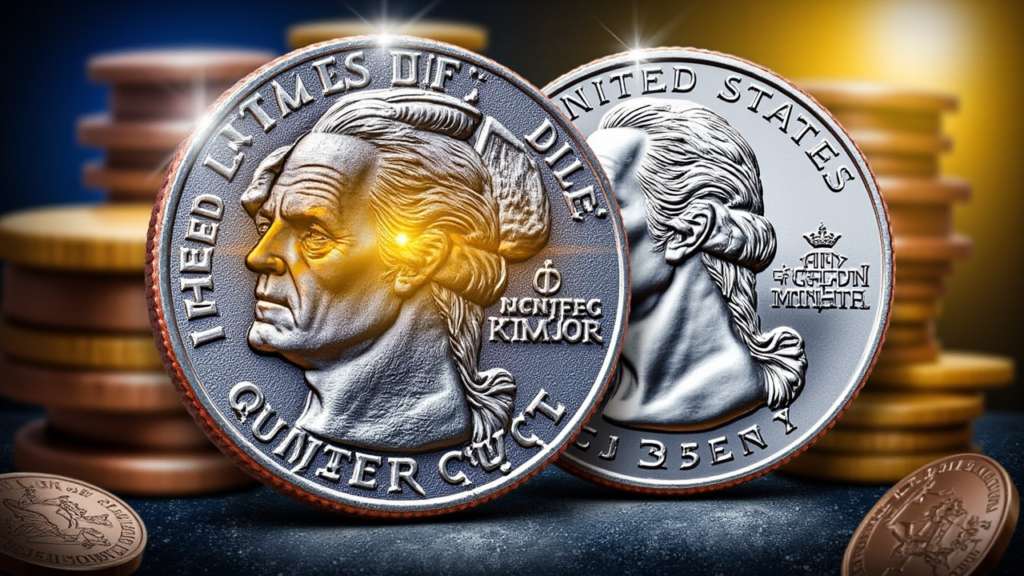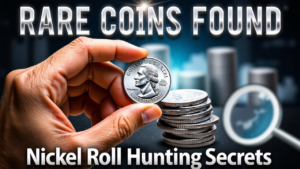The story of the $80 million Bicentennial Quarter is more myth than reality, but it highlights the excitement of coin collecting and the possibility of hidden treasures. Whether you’re a collector or just curious, knowing what makes the Bicentennial Quarter special and potentially valuable can add a new perspective to your hobby.
Bicentennial quarters unique.
The Bicentennial Quarter was minted in 1976. It commemorates the 200th anniversary of the United States’ independence. The special edition quarter is known for its unique reverse design by Jack L. Ahr, featuring:
- A Colonial Drummer: Symbolizing the revolutionary spirit.
- A Torch and 13 Stars: Representing the original colonies.
- Dual Date “1776–1976”: Highlighting the bicentennial milestone.
The obverse keeps the familiar image of George Washington, but the reverse design is unique, so it can be recognized at a glance. Two distinct types of quarters were issued:
- Clad Versions: In copper and nickel, clad versions are made for circulation.
- 40% Silver Versions: Only minted in collector’s sets, these really contain silver.
Factors That Affect Value
There are a few reasons that make the ordinary Bicentennial Quarters more valuable:

1. Error Coins
Some minting errors, for example:
- Off-center strikes: When the die misaligns during minting.
- Double strikes: The coin is struck twice, with overlapping designs.
- Missing details: Stars or numbers may be faint or missing.
Unique errors can bring hundreds of dollars from collectors.
2. High-Grade Coins
Coins graded MS-67 or higher (on a 1–70 scale) by professional services are highly sought after. High grades indicate sharp details, perfect luster, and no wear, making these coins attractive to collectors.
3. 40% Silver Issues
These coins are intrinsically more valuable because of the silver content. Uncirculated or proof coins in mint condition can command premiums.
4. Interesting Provenance
Coins with interesting histories or from famous collections tend to sell for higher prices.
Fact or Fiction
The source of a myth of an $80 million Bicentennial Quarter can be traced from exaggerated claims and misunderstandings. No Bicentennial Quarter ever sold at this high figure, but the legend does emphasize the possibility of high values that rare coins can bring.
The 1933 Saint-Gaudens Double Eagle brought in millions as well as the 1794 Flowing Hair Silver Dollar. Such million-dollar coins create dreams of striking it rich.
Bicentennial Quarter Hunt

Even if it is not that million-dollar coin, collecting Bicentennial Quarters may be a fun task:
1. Sort Your Coins
Bicentennial Quarters remain in circulation. Look for clean, nice, or clearly damaged coins among your spare change.
2.Bank Rolls
Turn your cash into quarter rolls at your bank. Rolling is one of the easiest ways to dig through coins to find some nice finds.
3.Coin Shows and Auctions
Visit coin shows to network with experts and browse collections. Auctions may offer access to higher-grade coins or error pieces.
4.Tools and Storage
Magnifying Glass: Essential for spotting fine details and errors.
Coin Holders: Protect your valuable finds from scratches and environmental damage.
Joy of Coin Collecting
The likelihood of ever finding an $80 million Bicentennial Quarter is a sliver, but the thrill in collecting rare coins lies in the journey. It’s exciting to stumble upon a high-grade example or even spot an unusual minting error.
Collecting coins isn’t only about the value but about the history, artistry, and thrill of knowing. So keep your eyes open and your pockets ready for who knows what treasure you may come across.
FAQs:
What is special about the Bicentennial Quarter?
Its unique design commemorates the 200th anniversary of U.S. independence.
Are Bicentennial Quarters valuable?
Most are worth face value, but high-grade or error coins can fetch more.

